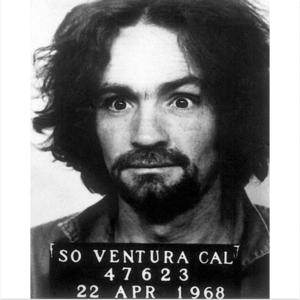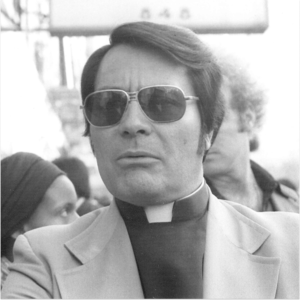16 year-old Camilla Savelieva explores how cult leaders use fear to exert power

November 17, 2023
Destruction in devotion: how do cults weaponise human vulnerability?
The ambiguity of an ‘end to all’ has been used as a form of exploitation to keep people fearful and submissive – and Charles Manson’s “Helter Skelter” prophecy, a vision heralding an apocalyptic race war, might serve as an example.
Manson was the leader of the Mason Family cult operating in California in the 1960s, which carried out a series of at least nine murders.
He specifically recruited women who were ‘bruised but not completely broken,’ before implementing mind-control techniques similar to those used by the Central Intelligence Agency (CIA), which at the time also experimented with the use of psychedelics on mind-control.
Manson discovered the keys to attaining complete devotion from an individual: isolation and dependence. He exploited the victims’ vulnerabilities, using intimacy and extreme amounts of Lysergic acid diethylamide (LSD), which rendered them dependent and susceptible to suggestion.
Former Family member Dianne Lake stated that “He had this uncanny ability to manipulate because he could become whoever those people that he met needed... [he could] read people.”

Charles Manson's 1968 mugshot
Manson abused the trust of his followers, forcing them into vulnerable positions with no visible way out to garner a unique power that few at the time had.
After an LSD trip where Manson saw himself being crucified, he became convinced that he was the Messiah.
He professed the advent of a ‘Black-White race war’ called “Helter Skelter” (a misinterpreted term he took from the White Album by The Beatles), which would end with the Manson Family ruling.
Manson declared that to start this ‘war’, the Family needed to perform a series of ‘random’ murders all over Los Angeles. Effectively, Manson was tried and sentenced on seven counts of first-degree murder. He died without walking free in 2017, aged 83.
The influence of Manson carried on even after the dismantling of the cult. The Manson Family gang members were told by lawyers and prosecutors that they could save themselves by forsaking Manson and testifying, yet they chose to rot in prison with ‘Charlie’.
Even innocent members would sit outside the courtroom with Manson’s ‘X’ carved into their foreheads for days on end, waiting for their ‘Messiah’ to return.
Another example of one employing such insidious manipulation tactics is James Warren Jones. He founded the People’s Temple in 1955 in Indianapolis, a multi-racial religious movement that attracted many followers.
As a key assertion of control and as a way to avoid media scrutiny, he moved his church to California in 1967, then to a remote agricultural settlement in Guyana they called ‘Jonestown’. This subjected his followers to the uncertainty of living in a remote South American Jungle, leading to their reliance on him as he elevated himself as a messianic figure.
According to psychologist Phillip Zimbardo, Jones used brainwashing tactics almost identical to those in George Orwell’s novel, 1984. Jones forced followers to spy on one another and constantly blasted messages from loudspeakers so that his voice and teachings were always present, forcing followers to expose their deepest fears and secrets to him in written statements that enabled his further exploitation of them.
Jones’ final act of power? A fabricated apocalypse.

January 16, 1977. Reverend Jim Jones at an anti-eviction rally in San Francisco, California
On November 18, 1978, in fear of the military seizing Jonestown, he instructed his followers to kill themselves and their families.
In the recorded ‘Jonestown Death Tape’, a 45-minute audio recording of the mass poisoning in progress, Jones claimed that “if we can’t live in peace, then let us die in peace.”
Even till the end, Jones was able to convince his followers that their deaths were for a noble cause; he was able to exploit their fears to show that their allegiance to him was deserved.
The event, caused by this blatant and sick abuse of power, claimed over 900 lives – it remained the greatest single loss of American civilian life in a deliberate act until the 9/11 attack.
Reading about these horrific tragedies from a third-person perspective builds a glass wall between us and the victims of cults – as though we are looking at a museum display. We like to think that we would never allow such dangerous people to take power, but it’s important to look at the situation through the lens of a potential victim.
To all but those who knew them, Charles Manson was just a friendly, guitar-playing hippie and Jim Jones a country preacher who believed in racial equality; they were not viewed as the morally reprehensible monsters we know today.
If you place a frog into boiling water, it will instantly realise the danger and jump out; if you place it in cold water, slowly turning the temperature up to a boil, the frog will die.
In the same way, these cult leaders preyed on human fear, exploited their victims’ devotion, and utilised vulnerability as an insidious tool for control.




